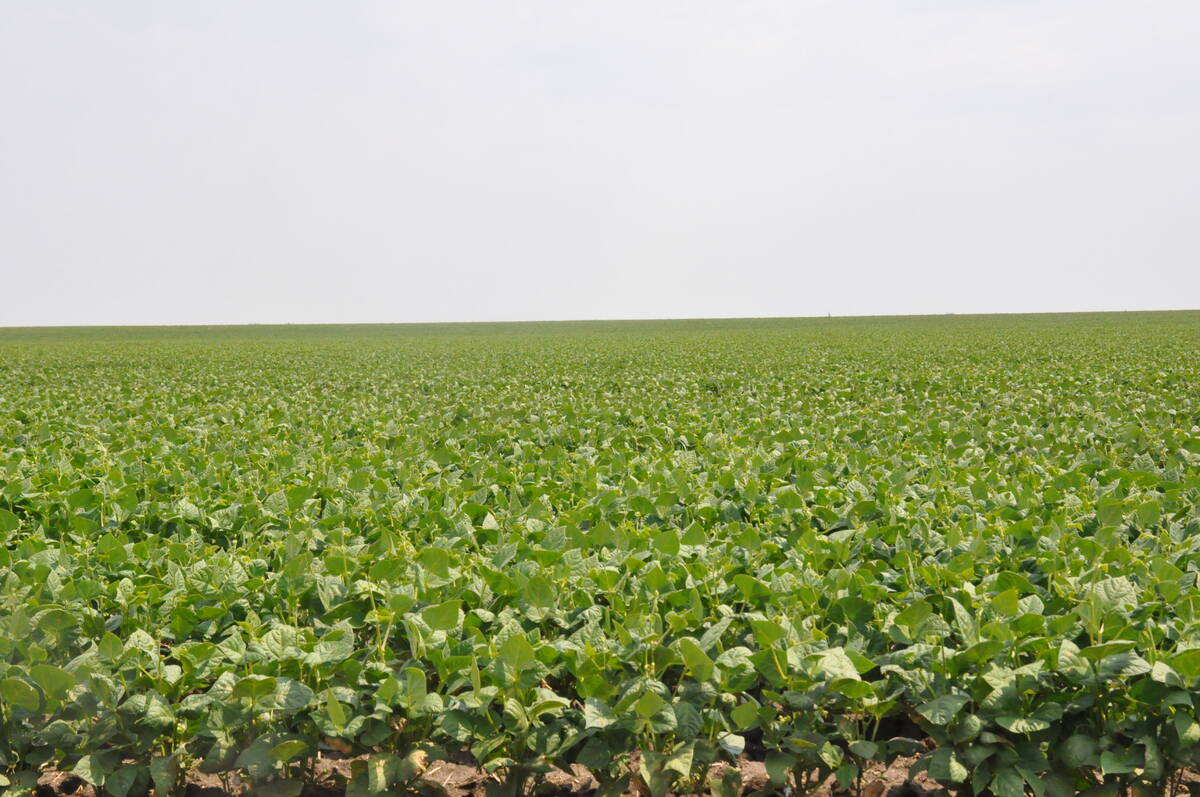Rain has quenched dry pastures and bolstered producers’ spirits in western Saskatchewan and eastern Alberta, some of the driest areas on the Prairies this spring.
Jo-Ann and Dale Vayro grow feed for their 200 cow-calf herd near Sonningdale, Sask. This year, they had to buy more feed than usual for their animals and delay putting them onto pastures.
“It adds a little more expense to the situation,” Jo-Ann Vayro said, citing limited options for producers who are unable to sell cattle since the BSE outbreak in May 2003.
Read Also

Coloured bean production down, whites are up
Bean prices have been slumping and the outlook is for more of the same.
“We’re stuck between a rock and a hard spot – overgraze the grass or sell the cattle for nothing,” she said.
After a series of drought years, 25 millimetres of rain in the last week of May improved the situation significantly.
“This has given a little hope to the situation,” she said.
Vayro said everything is late – trees, pastures, hayland and grasshoppers. While cool weather has slowed growth, it has also kept the dryland from burning up, she added.
The rain has been variable throughout the region, with areas closer to the North Saskatchewan River getting twice as much as the Vayro ranch.
While farmers in dry regions are relieved, parts of Manitoba and southern Saskatchewan are reporting too much rain and delayed seeding.
According to provincial crop reports for the week of May 30, west-central pastures are in the poorest shape, with 75 percent in poor or very poor condition. Conditions elsewhere were variable, with 71 percent in fair to excellent condition.
Michel Tremblay, provincial forage specialist with Saskatchewan Agriculture, said cool temperatures and successive dry years have contributed to poorer, less vigorous pastures and hay fields. As well, producers have been forced to use pastures more than they would like. All of these factors are working together to stress the land.
“We won’t be able to recover but we’ll at least get on the scoreboard with the crop this year,” he said.
Rain in recent days will lessen some of the stress, he added.
“This is going to yank forage from the teeth of defeat.”
Producers who use rotational grazing have benefited because it allows grass time to recover during the growing season. But more rain and heat will be needed to help enhance pasture vigour, he added.
Producers in eastern Alberta are also looking to the skies for more rain this week.
Cool dry weather around Vermilion meant grass was slow to grow, although a jump in growth was reported last week, with rain exceeding 50 mm in some areas.
Pastures are generally very poor in central Alberta – stressed from drought and grasshoppers last year and extra animals on them this year.
“Everything has just piled up,” said Mark Johns, an Alberta Agriculture forage specialist in Stettler.
He said those producers who practise rotational grazing fared the best. Younger hay fields are also in better shape than older ones.
More rain is still needed through the summer, he added, noting the subsoil remains dry and root systems are depleted in overgrazed pastures.
“They will be a while recovering,” he said.
Helping pastures
In Manitoba, many producers are forced to overuse their pastures because of dry conditions in three of the last four years, feed shortages and higher animal numbers.
“For every day you stay off the pasture in spring, you get about three days later to keep your cattle on pasture in the fall,” said Glenn Friesen, provincial forage specialist with Manitoba Agriculture. “We were on too early this year.”
Overgrazing, winterkill and excess moisture from recent blanketing rains are combining to cause damage in lower lying areas.
Friesen said summer rain will further benefit perennials, which require good subsoil moisture.
“The situation could be far worse if we didn’t get the rain now, so we’re happy.”














